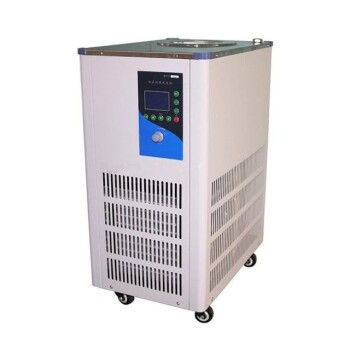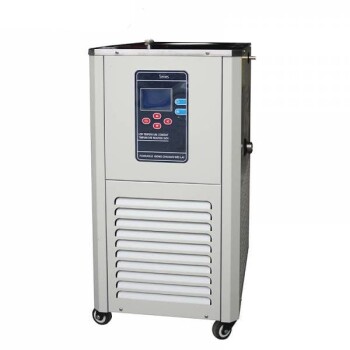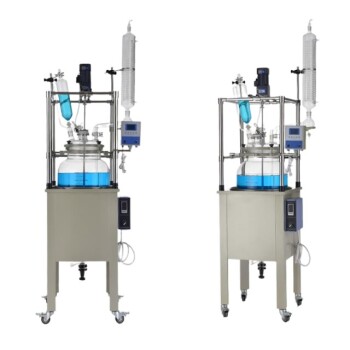The optimal temperature for a rotary evaporator (rotovap) depends on the solvent being evaporated, the desired speed of evaporation, and the need to prevent thermal decomposition or bumping. For most common lab solvents, a water bath temperature between 25°C and 50°C is sufficient. Lower temperatures (e.g., 30-40°C) are often preferred to minimize the risk of bumping and thermal degradation, while higher temperatures (up to 50°C) can speed up the process. The chiller temperature is typically set around 10°C to ensure efficient condensation of the solvent vapor. Tools like a manometer and distillation nomograph can help fine-tune the settings for specific solvents.
Key Points Explained:

-
General Temperature Range for Rotary Evaporation:
- Most common lab solvents evaporate effectively within a water bath temperature range of 25°C to 50°C.
- This range balances evaporation speed with the need to avoid bumping (sudden boiling) and thermal decomposition of sensitive compounds.
-
Lower Temperatures for Sensitive Solvents:
- For solvents prone to thermal degradation or bumping, lower water bath temperatures (e.g., 30-40°C) are recommended.
- Lower temperatures reduce the risk of bumping and help maintain the integrity of heat-sensitive compounds.
-
Chiller Temperature:
- The chiller is typically set to 10°C to ensure efficient condensation of the solvent vapor.
- Proper cooling ensures that the solvent vapor condenses back into liquid form, preventing loss and contamination.
-
Solvent-Specific Considerations:
- Different solvents have varying boiling points and thermal sensitivities, so the optimal temperature may vary.
- Tools like a manometer (to measure vacuum pressure) and a distillation nomograph (to determine boiling points under reduced pressure) can help tailor the settings for specific solvents.
-
Water Bath Temperature Capacity:
- Rotary evaporator water baths typically have a temperature range from room temperature +5°C to 95°C.
- Most applications, however, do not require temperatures above 50°C, as higher temperatures can increase the risk of bumping and thermal degradation.
-
Consistent Results with Automated Settings:
- For consistent results, some rotary evaporators feature a solvent library that automatically sets the vacuum and temperature based on the selected solvent.
- For example, ethanol evaporation might require a water bath temperature of 30-40°C and a vapor temperature of 15-20°C.
-
Importance of Vacuum Pressure:
- The vacuum pressure plays a critical role in determining the effective boiling point of the solvent.
- Lower vacuum pressures allow solvents to evaporate at lower temperatures, reducing the risk of thermal damage.
-
Practical Recommendations:
- Start with a water bath temperature of 30-40°C and adjust based on the solvent and sample requirements.
- Use a chiller set to 10°C for optimal condensation.
- Monitor the process to ensure smooth evaporation and avoid bumping.
By carefully selecting the appropriate temperature and vacuum settings, rotary evaporation can be performed efficiently and safely, ensuring high-quality results for a wide range of solvents and samples.
Summary Table:
| Parameter | Optimal Setting | Purpose |
|---|---|---|
| Water Bath Temperature | 25°C to 50°C | Balances evaporation speed and prevents bumping/thermal degradation. |
| Chiller Temperature | ~10°C | Ensures efficient condensation of solvent vapor. |
| Vacuum Pressure | Adjust based on solvent | Lowers boiling point, reducing thermal damage. |
| Tools for Fine-Tuning | Manometer, Distillation Nomograph | Tailor settings for specific solvents. |
| Automated Settings | Solvent Library | Provides consistent results for specific solvents like ethanol. |
Optimize your rotary evaporation process—contact our experts today for tailored advice!






























